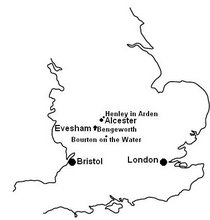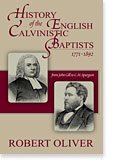Benjamin Beddome, who served as pastor of the Baptist church in Bourton-on-the-Water for over 50 years, lived a considerable distance from the chapel. He resided in a house about a mile away from the church, located along the Rissington Road. Historical accounts suggest that he would often walk to the chapel on Sunday mornings.
Beddome’s Sunday Routine
Walking to the Chapel
Walking was the most common mode of transportation for clergy and congregants in the 18th century, particularly in rural areas like Bourton-on-the-Water. Beddome's relatively short distance to the chapel made walking practical and allowed him time for contemplation or prayer as he prepared to lead worship.
The Scenic Route
The walk along the Rissington Road would have taken Beddome through the charming countryside and village surroundings, offering a peaceful and reflective start to his Sunday duties.
Occasional Use of Horse or Carriage
While walking was the norm, it's possible that in adverse weather or later in life, Beddome might have occasionally used a horse or a small carriage for convenience, though no specific records confirm this.
Spiritual Reflection During Travel
As a hymn writer and theologian, it’s plausible that the walk provided Beddome with inspiration for his hymns or sermons. His pastoral duties required much mental and spiritual preparation, and a walk through the tranquil landscape of Bourton would have been a fitting prelude to worship.
This simple routine reflects the modesty and dedication of Beddome's life and ministry, hallmarks of 18th-century Baptist pastors. His example would have resonated with his congregation, emphasizing humility and devotion.
What about a sedan chair? An interesting idea, but it seems unlikely given his circumstances and the context of rural Baptist life in 18th-century England.
Primarily Urban Transport
Sedan chairs were most commonly used in urban areas by wealthy individuals, as streets in cities like London or Bath were often too narrow or muddy for carriages. They were less common in rural settings like Bourton-on-the-Water.
Cost and Maintenance
Employing a sedan chair required not only the chair itself but also the services of at least two chairmen to carry it. For a Baptist minister like Beddome, known for his humility and modest means, this would likely have been seen as an unnecessary expense.
Cultural Considerations
Cultural Considerations
The Baptist tradition emphasized simplicity and equality, and such a display of comfort or status might have been viewed as at odds with the values of his congregation.
How Beddome Likely Travelled
Walking
Walking
Walking remains the most plausible mode of travel for Beddome. It was practical, cost-free, and aligned with the modest lifestyle expected of a Baptist minister.
Horse or Simple Conveyance
If physical infirmity or weather made walking difficult, he might have used a horse or a small, locally available cart.
Community Support
In small, tight-knit communities, congregants often assisted their ministers. If necessary, someone in the congregation might have offered Beddome a ride in a cart or carriage.
While sedan chairs were a feature of 18th-century transportation, they would have been an unusual choice for a rural Baptist minister like Benjamin Beddome. Walking, with occasional assistance from a horse or cart, better aligns with both the geographical and cultural realities of his time and position.
*
If Benjamin Beddome was invited to preach at Stow-on-the-Wold, a neighbouring town approximately 4-5 miles from Bourton-on-the-Water, the journey would likely have been more complex than his usual Sunday routine. In such cases, his mode of transport would have depended on practicalities like weather, terrain, and available resources.
Walking
Walking was a common mode of travel even for longer distances in the 18th century, especially for those in rural areas. While a 4-5 mile journey might have taken about 1.5-2 hours on foot, Beddome was known for his pastoral dedication and might not have minded the walk.
The journey would involve hilly terrain as Stow is situated at a higher elevation, making walking more strenuous than his local walk to the Bourton chapel.
Horseback
Horseback
Riding a horse was a practical and relatively fast way to travel such a distance. Horses were commonly used for rural travel, even among modest clergy, as they provided a balance between speed and cost-effectiveness.
Given Stow’s location on the Cotswold hills, a horse would have been particularly helpful for navigating the uphill paths.Cart or Carriage
If the journey required carrying items (eg books or materials for preaching) or if Beddome was travelling with others, a cart or carriage might have been used. While less common for rural Baptist ministers, borrowing or renting a cart from a local farmer or congregant could have been an option.
Assistance from Congregants
In the spirit of Baptist community, members of either the Bourton or Stow congregations might have offered Beddome a ride. This mutual support was typical in small church communities.
Conclusion
If Benjamin Beddome travelled to preach in Stow, horseback would have been the most likely and practical option, balancing efficiency with the modesty expected of a Baptist minister. However, walking or relying on the assistance of congregants were also plausible, reflecting the communal and resourceful nature of his ministry.





No comments:
Post a Comment